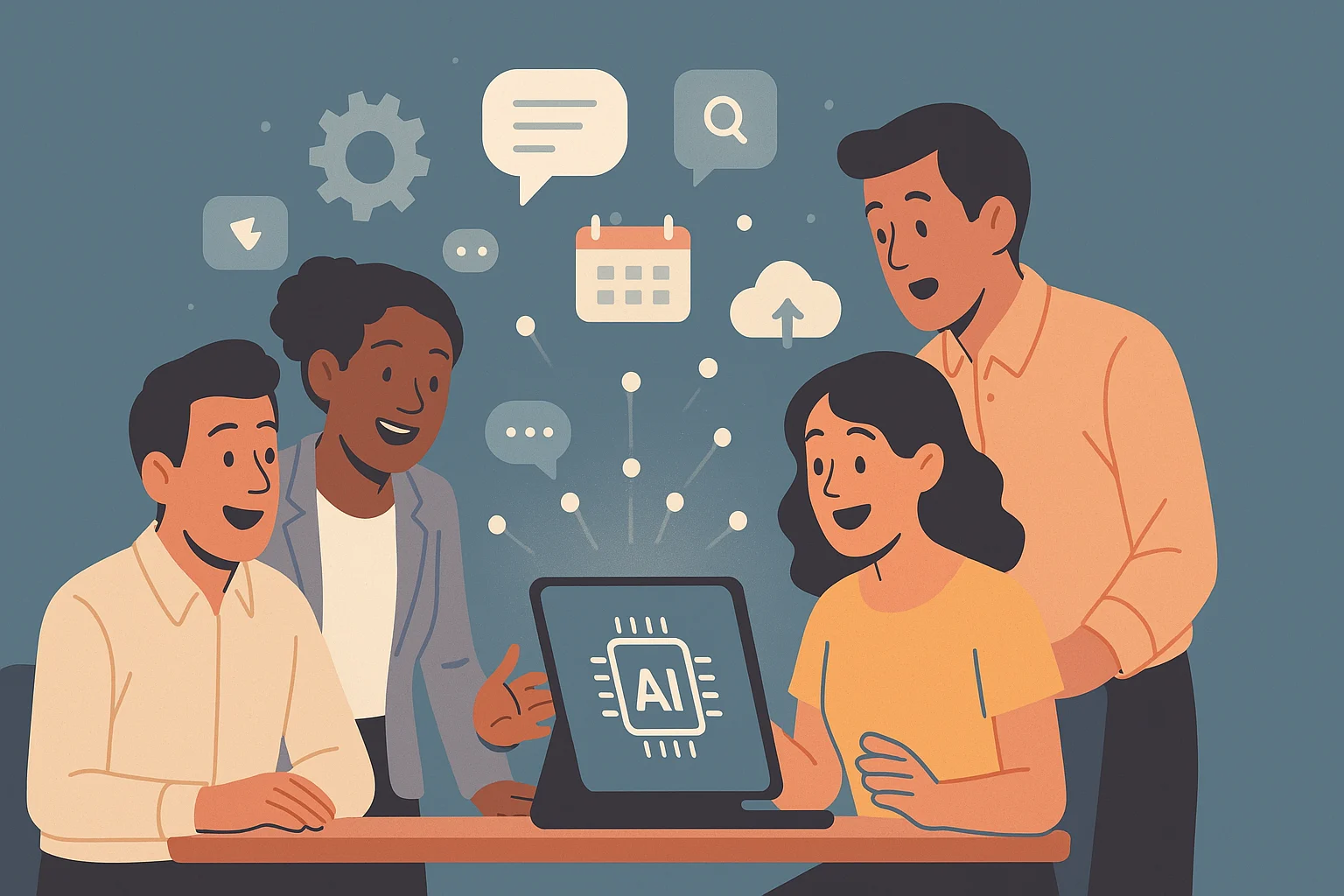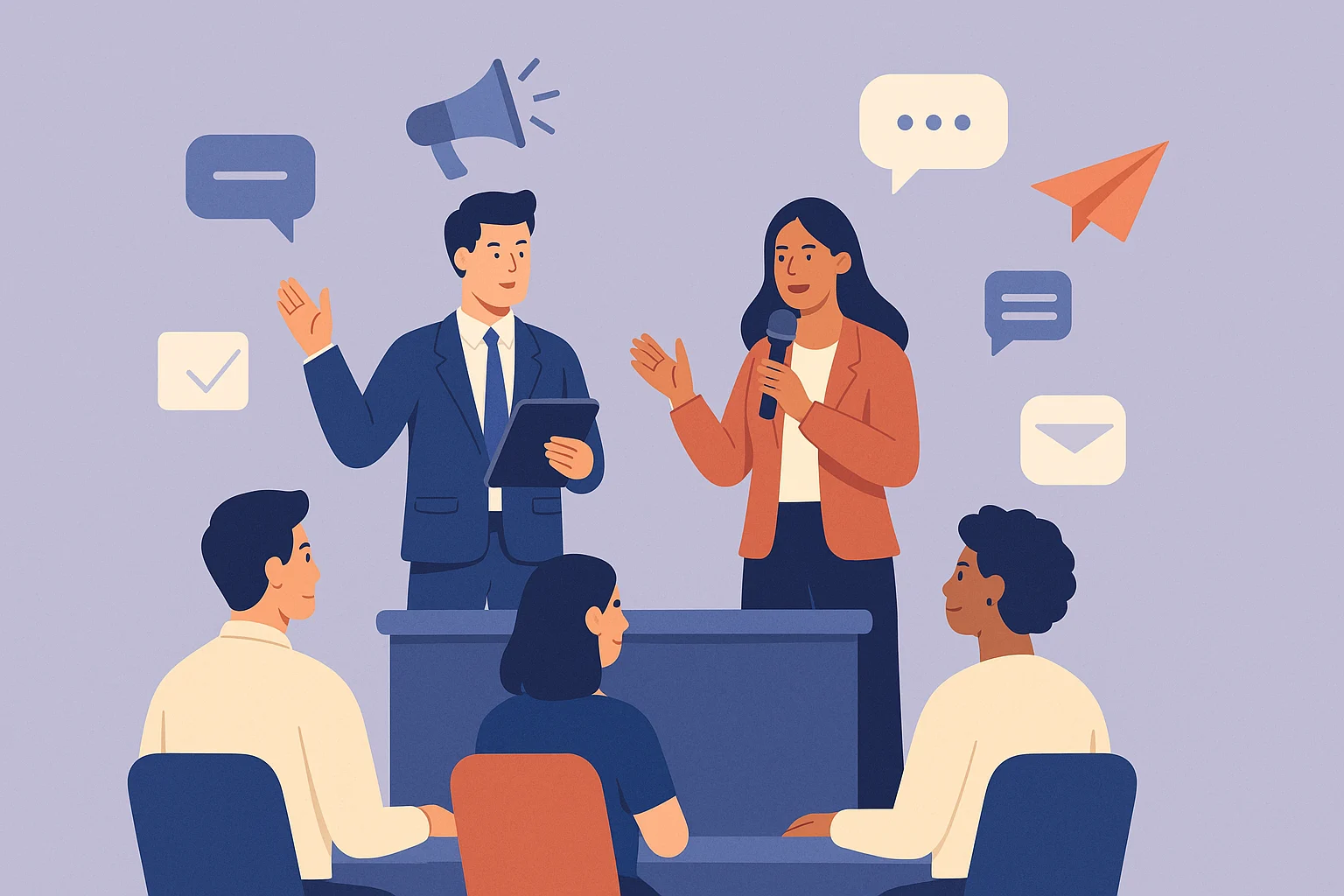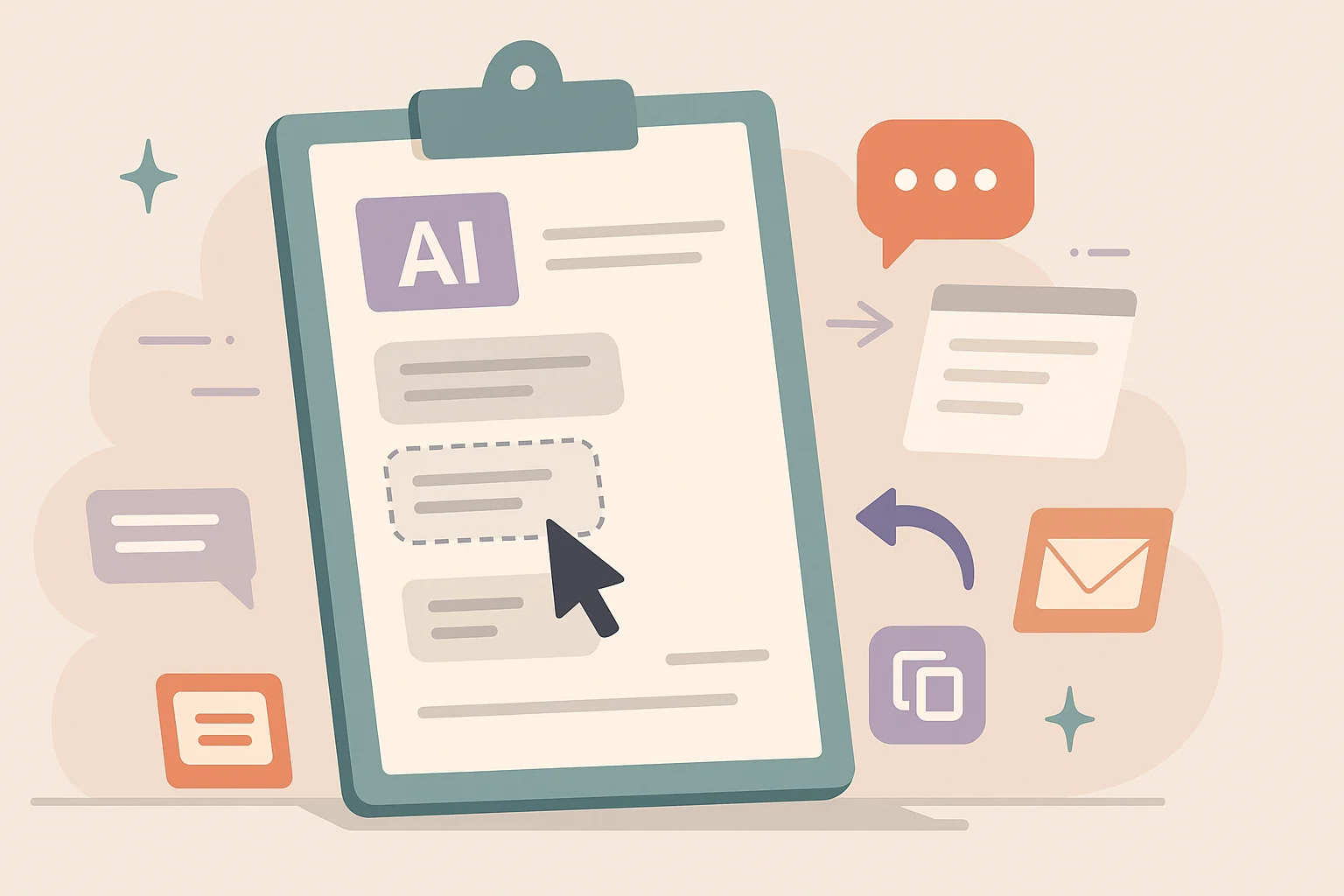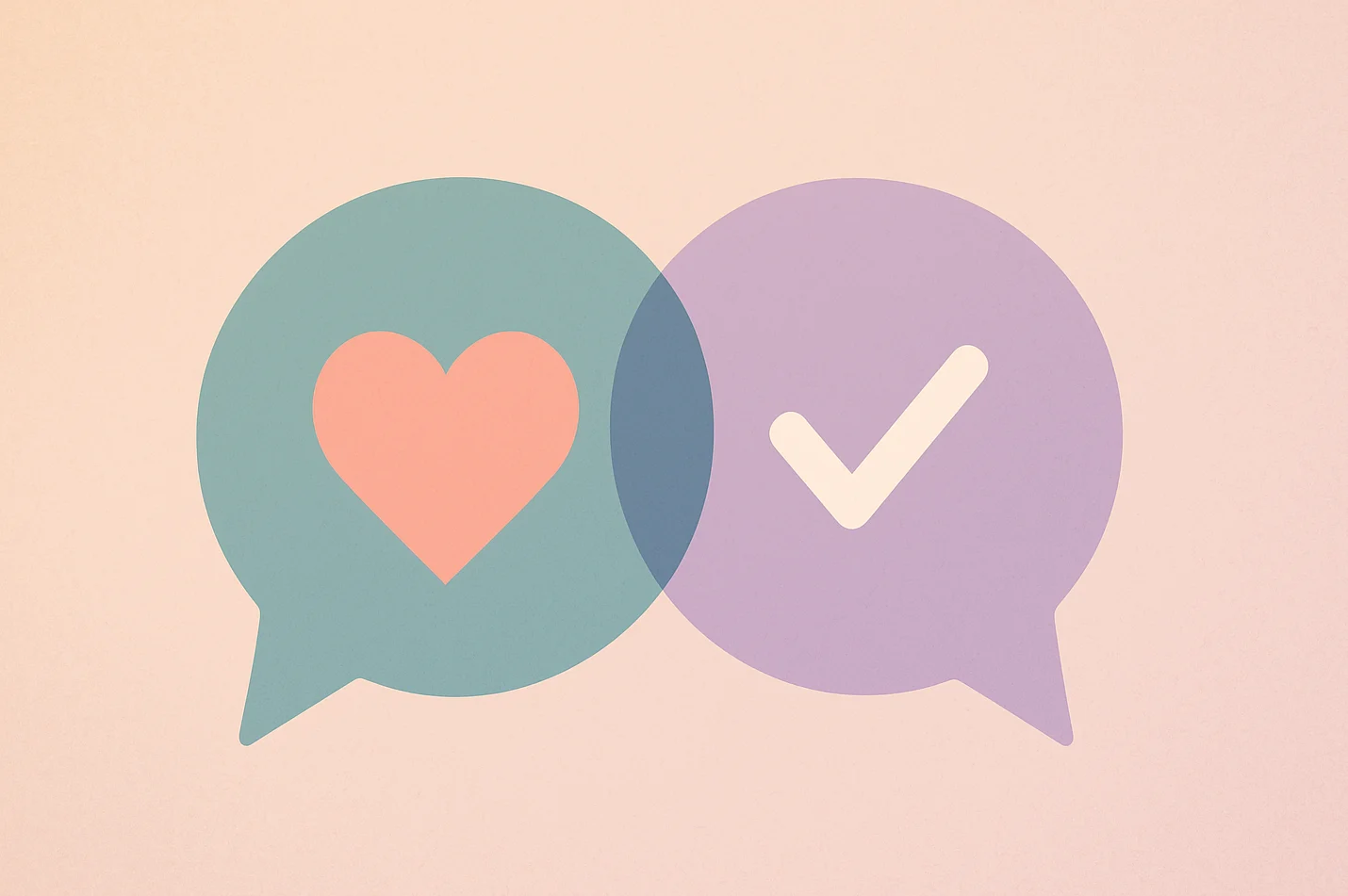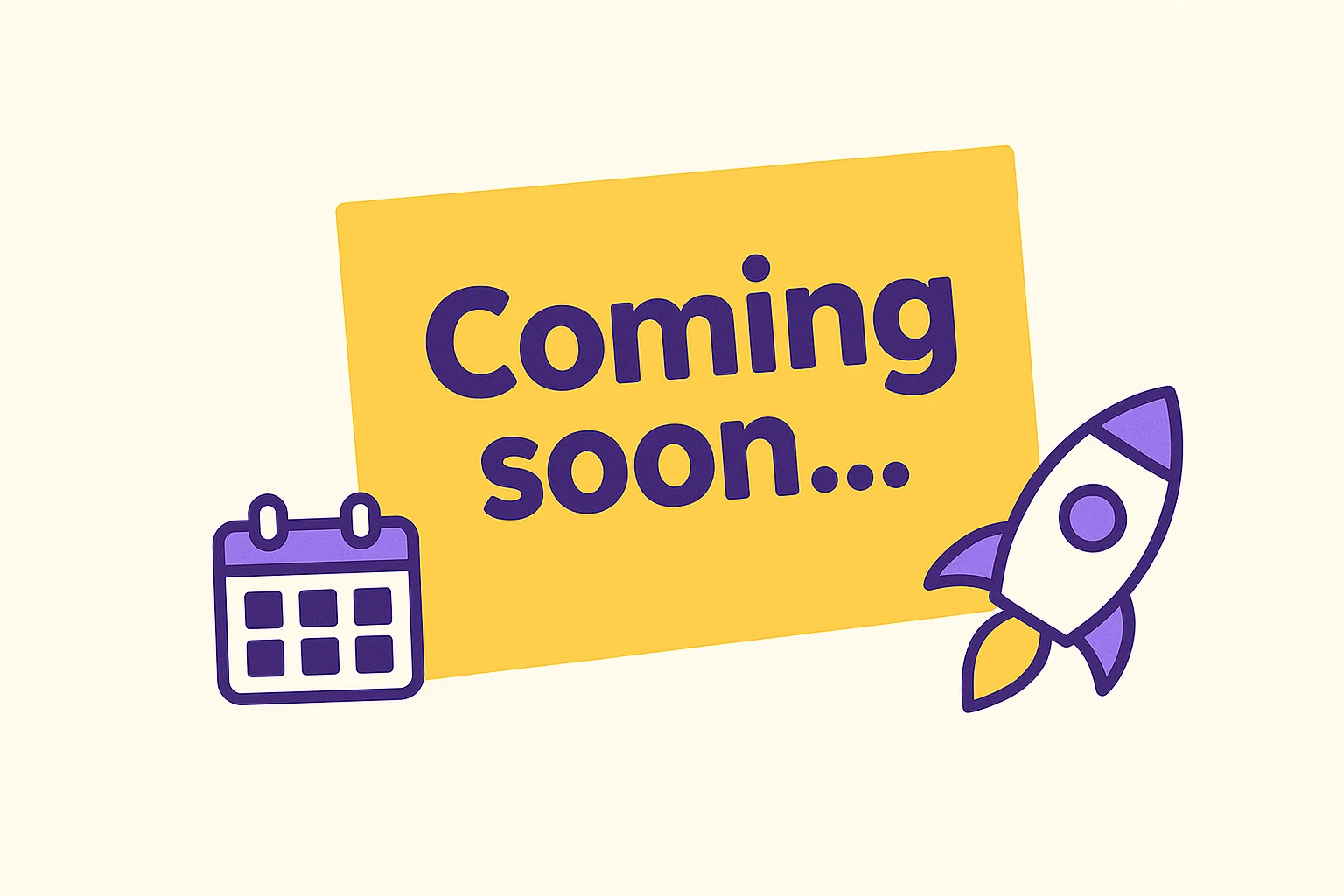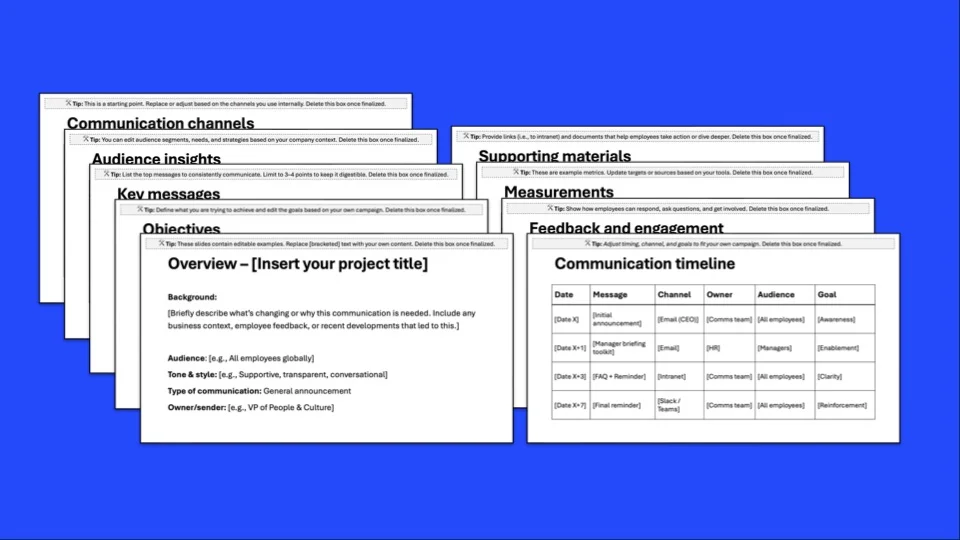Workplace collaboration has never been more challenging—teams are overloaded with messages, meetings, and tasks. Enter AI-powered teams: the key to cutting through noise, automating the busywork, and unlocking productivity like never before.
AI communication tools are revolutionizing workplace collaboration in 2025, enhancing internal communications, HR, and marketing. From AI-powered chatbots and meeting summaries to advanced copywriting assistants like Grammarly, organizations are boosting efficiency and engagement.
A McKinsey survey found 65% of companies were regularly using AI by early 2024 (nearly double the rate ten months prior), and 75% of executives expect these technologies to drive significant changes in coming years. So, let’s discover how AI is shaping the future of teamwork and the key trends driving this transformation.
AI-powered teams in 2025: transforming workplace collaboration
Effective internal communication keeps employees informed, engaged, and aligned with company goals. In 2025, communicators are turning to AI to personalize and expedite messaging. Industry observers note that AI and analytics have become “game-changers for internal communications” by delivering relevant content that boosts employee engagement.
Rather than sending one-size-fits-all emails, companies can use AI to tailor updates to different audiences (e.g. by role or location), ensuring employees get the information most pertinent to them. This personalization helps cut through information overload and makes messages more engaging.
AI chatbots improving accessibility
AI chatbots and assistants are also playing a big role internally. Many organizations deploy AI-powered chatbots on intranets or Slack/Microsoft Teams channels to answer common employee questions (IT help, HR policies, benefits, etc.) instantly. This on-demand support improves the employee experience and frees up HR and IT staff for more complex issues.
In fact, Gartner predicts that 75% of routine HR inquiries will be handled by chatbots or conversational AI platforms in the near future. Additionally, 92% of HR departments see value in bots guiding employees to the information they need – for example, helping a new hire navigate the onboarding process or find the latest travel policy.
What if every employee had a personal HR assistant available 24/7? With AI, that’s not just possible—it’s already happening.
AI-powered meeting summaries and efficiency boosts
Another major efficiency boost comes from AI’s ability to summarize and organize information. Collaboration platforms like Slack have integrated AI features that can instantly summarize long threads or channels to catch someone up.

Microsoft Teams’ Copilot AI can recap the key points from a meeting (and even summarize content shared on-screen, like PowerPoint slides or documents) so that no one misses critical updates.
Beyond text, meeting productivity has improved thanks to AI. Zoom’s AI Companion, for example, can “catch you up” if you join a meeting late by generating a real-time recap of what was discussed. After meetings, it automatically produces a summary highlighting who said what, important topics, and action items.
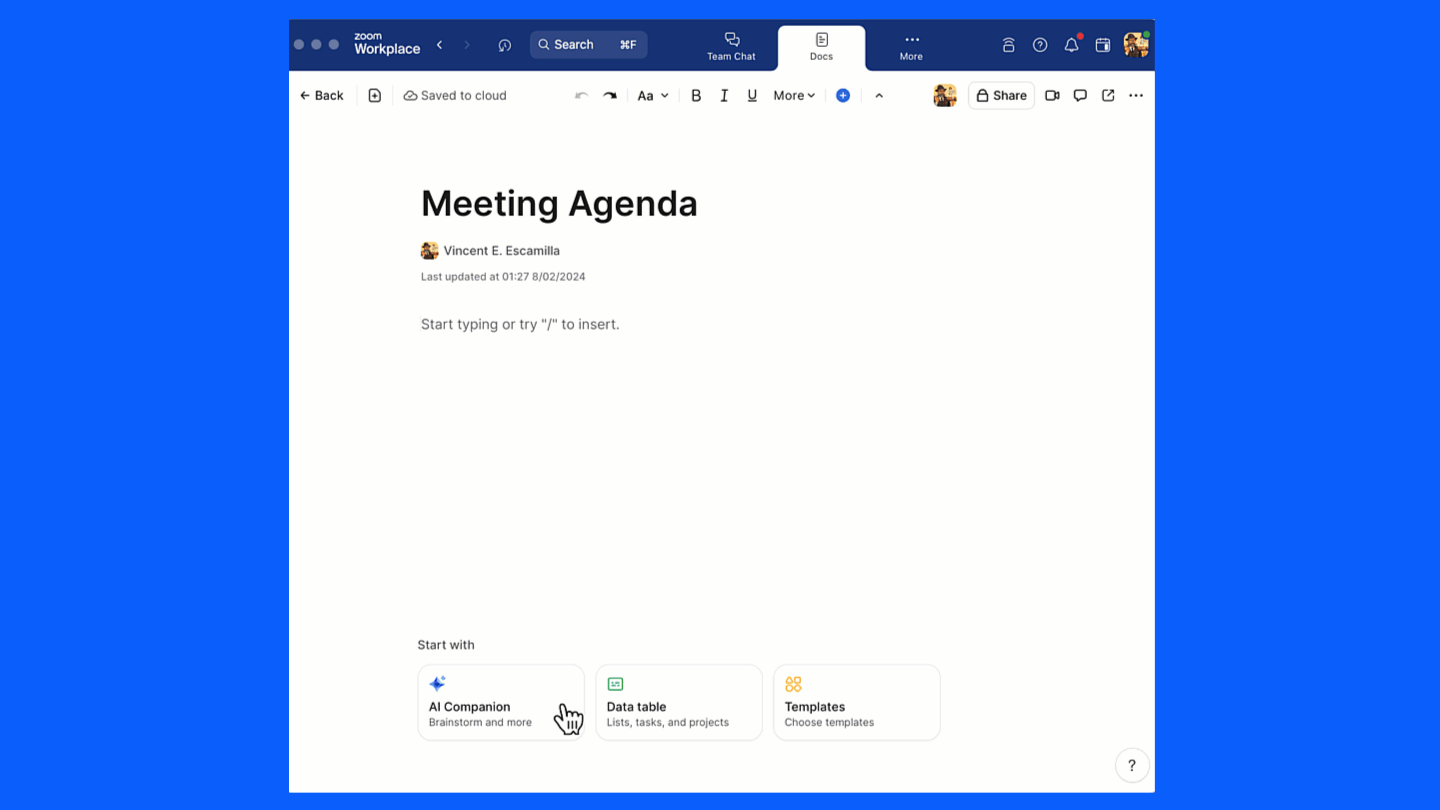
How AI-powered teams enhance internal communications and HR
HR teams are leveraging AI to support, engage, and manage their workforce more effectively.
- Employee onboarding & training: AI virtual assistants guide new hires through onboarding, providing interactive checklists, reminders, and even personalized learning paths.
- AI-powered performance management: AI tools can analyze employee feedback and engagement trends to provide actionable insights for HR teams.
- Recruitment & employer branding: AI-driven writing assistants help recruiters craft personalized outreach emails, and AI chatbots interact with potential applicants 24/7.
A recent study found that 88% of organizations worldwide were leveraging AI in some form of HR by 2019. The number has only grown as AI continues to optimize processes and boost engagement.
According to Josh Bersin, a leading HR industry analyst, AI is rapidly transforming the HR function by automating administrative tasks, improving workforce planning, and enabling more data-driven decision-making. He highlights that AI-driven HR solutions are not just about efficiency but also about creating more personalized employee experiences, ensuring that workers receive relevant training, career path recommendations, and proactive engagement strategies.
AI-powered teams in marketing: revolutionizing content creation
Generative AI for content creation
Marketing professionals were among the earliest adopters of AI copywriting tools. By 2025, more than 77% of marketers use AI tools to generate ideas, draft content, and optimize messaging.

AI-powered platforms like Grammarly, Jasper, and Copy.ai allow marketers to:
- Brainstorm campaign ideas and generate multiple variations of ad copy.
- Optimize email subject lines based on past performance.
- Tailor content dynamically to different audience segments.
Grammarly, in particular, has become an essential AI-powered writing assistant. Teams using its AI writing tools report a 30% increase in writing efficiency, with fewer miscommunication issues.
AI-driven personalization and automation
AI enables hyper-personalization, ensuring customers receive content that aligns with their behavior and preferences. Automated AI workflows in email marketing generate tailored messages at scale, increasing open rates and conversions. According to Gartner, 30% of all outbound marketing messages from large companies are now AI-generated.
Emerging AI trends in communication
Looking beyond 2025, AI is expected to introduce even more seamless collaboration tools:
- AI-powered co-workers: AI agents like Microsoft Copilot and Slack Agentforce will take on more autonomous tasks, from project management to real-time workflow optimization.
- Real-time multilingual collaboration: AI-powered translation will enable global teams to work without language barriers, improving inclusivity.
- Predictive AI for decision-making: AI will analyze workplace conversations and projects to offer proactive insights, helping teams work smarter.
Organizations that embrace AI today will gain a major advantage in productivity, engagement, and collaboration.
AI communication tools: comparison table
| AI tool | Key features | Benefits |
|---|---|---|
| Slack AI | Summarizes chat threads, automates meeting recaps | Saves time and reduces information overload |
| Microsoft Teams Copilot | Real-time meeting notes, integrates with Office apps | Enhances productivity and team collaboration |
| Zoom AI Companion | Generates meeting summaries, highlights action items | Improves accountability and efficiency |
| ChatGPT | AI-powered assistant for copywriting, research, and brainstorming | Enhances creativity and streamlines workflows |
| Grammarly AI | Real-time writing enhancement, tone analysis | Ensures brand voice consistency and professional communication |
Final thoughts
AI communication tools have transformed workplace collaboration across internal communications, HR, and marketing. They help businesses save time, enhance engagement, and drive efficiency.
The future of team collaboration will likely feature AI as an ever-present participant, handling repetitive tasks while empowering employees to focus on strategy and creativity.

